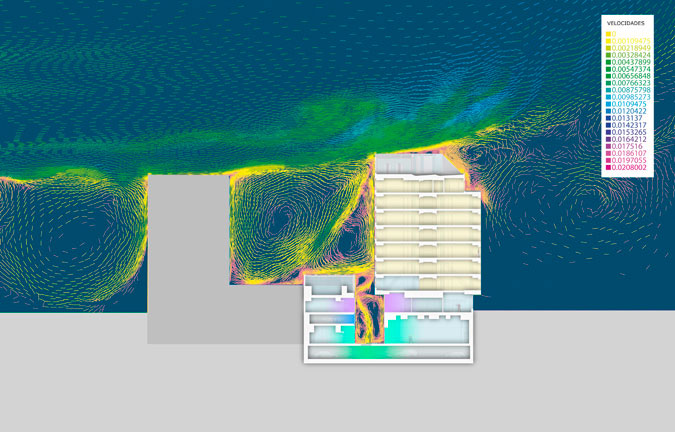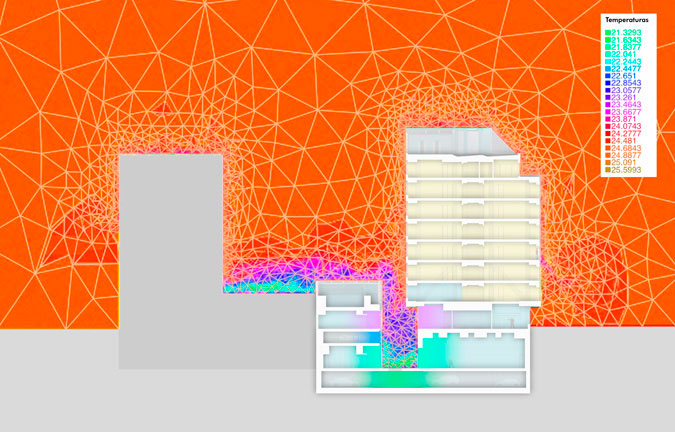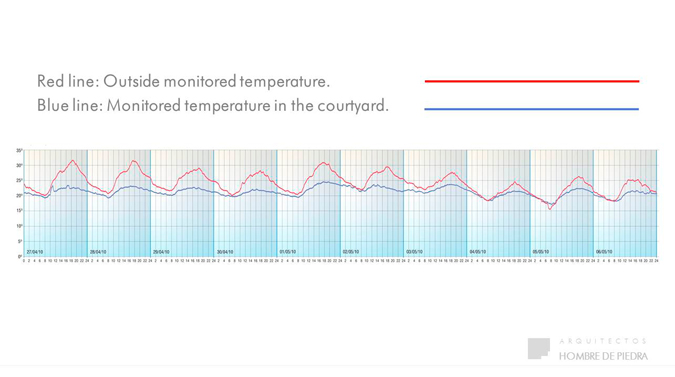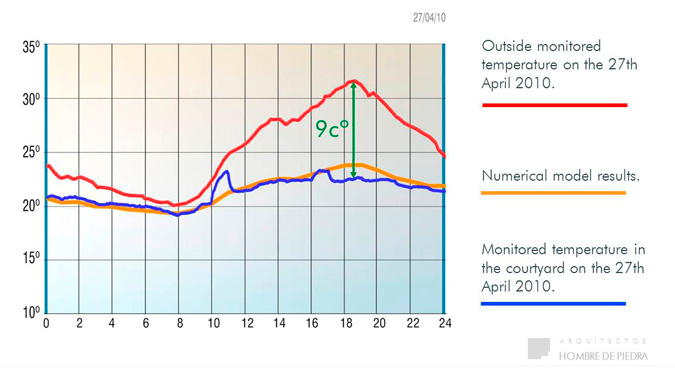PARAMETRIC STUDY OF THERMODYNAMICS IN THE MEDITERRANEAN COURTYARD AS A TOOL FOR THE DESIGN OF ECO-EFFICIENT BUILDINGS
Juan M. Rojas Fernández, Carmen GalánMarín, Enrique Fernández Nieto
Traditionally, people in the Mediterranean region knew that the temperatures in their courtyards were cooler in summer than outside temperature. This paper provides a quantitative study on the usefulness of Mediterranean courtyards as passive energy saving systems. This work is based on the creation of a Computational Fluid Dynamics (CFD) numerical model developed using the open source Freefem++ language. In this work, first the numerical model is tested using simplified-shape courtyards which have been previously studied both physically under controlled parameters, and mathematically through numerical simulations. We also study the most appropriate depth ratio for a courtyard, based on these simplified shapes, depending on the climate. Secondly, we apply the numerical model in a real geometry, the Monte Málaga hotel. We compare the numerical results with the monitored data of the temperature in the courtyard of the hotel. The numerical model takes into account precomputed solar radiation in the walls of the courtyard, the predominant wind and buoyancy effects.
On the 10th of july, 2012, international magazine Energies publishes this article on courtyard’s thermodynamics:
http://www.mdpi.com/1996-1073/5/7/2381
ESTUDIO PARAMÉTRICO DE LA TERMODINÁMICA DEL PATIO MEDITERRÁNEO COMO HERRAMIENTA PARA EL DISEÑO DE EDIFICIOS ECO-EFICIENTES
En el Mediterráneo se sabe desde antiguo que la temperatura en los patios es más fresca que en la calle en verano. Este artículo proporciona un estudio cuantitativo…
Proyecto Fin de Máster universitario
Air velocities

Stratification of the air in the courtyard due to buoyancy effects



Mediterranean Courtyard Thermodynamics Strategy
MEDIA DIFFUSION
TRADITIONAL COURTYARDS: AN EXAMPLE OF ECO-EFFICIENCY FOR ARCHITECTS
The inhabitants of Mediterranean regions have known for centuries that during the summer their courtyards are cooler than the street.
Eco-efficient projects of recent decades tend to do away with courtyards or use glass covered atriums since the greater the surface area, the greater the energy transmission. But the energy rating used to calculate this assumes that the air inside and outside of the courtyard is at the same temperature. This is not the case and must be considered.
LOS PATIOS MEDITERRÁNEOS ENSEÑAN ECOEFICIENCIA A LOS ARQUITECTOS
Investigadores de la Universidad de Sevilla han cuantificado con herramientas matemáticas lo que se sabe desde antiguo: la temperatura de un patio interior es más suave que la del exterior. Parece de sentido común, pero conocer en detalle esta información ayuda a ahorrar energía y dinero, el objetivo de los edificios ecoeficientes.
http://www.agenciasinc.es/Noticias/Los-patios-mediterraneos-ensenan-ecoeficiencia-a-los-arquitectos
Este mismo vídeo forma parte del boletín “La ciencia es noticia” de octubre de 2012 de la FUNDACIÓN ESPAÑOLA PARA LA CIENCIA Y LA TECNOLOGÍA, FECYT:
HISTORIAS DE LUZ (LIGHT STORIES) 16th Oct 2013

